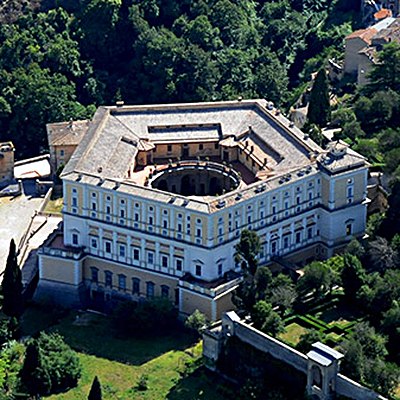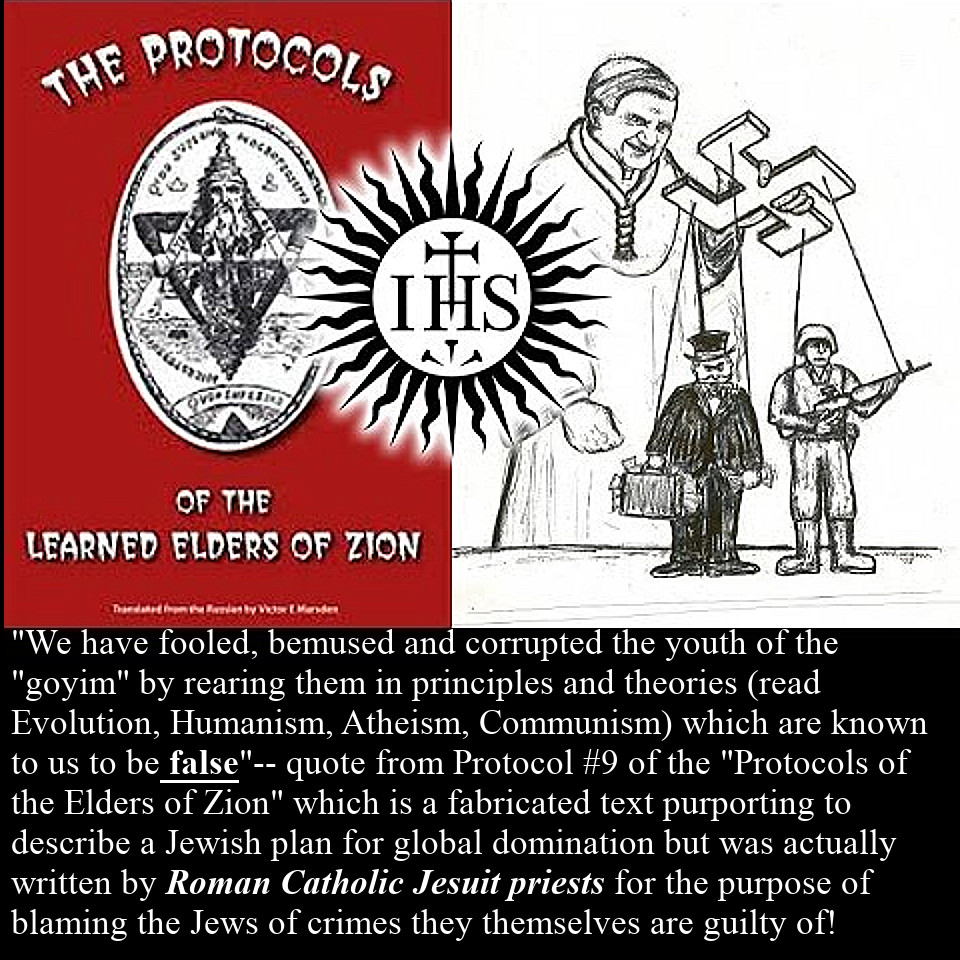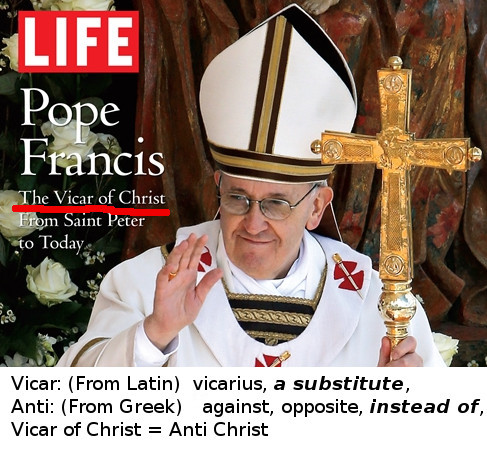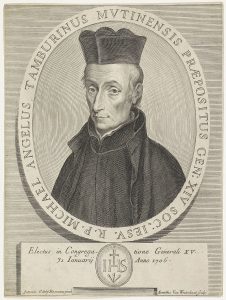Adam Clarke (1762 – 1832) was a British Methodist theologian, preacher, and commentator. He is chiefly remembered for writing a commentary on the Bible. In my opinion, Clarke’s style of writing is the clearest and easiest to understand among Bible commentators of the 19th century and
earlier.
This chapter contains a prediction of the utter destruction of the city and temple of Jerusalem, and the subversion of the whole political constitution of the Jews; and is one of the most valuable portions of the new covenant Scriptures, with respect to the evidence which it furnishes of the truth of Christianity. Every thing which our Lord foretold should come on the temple, city, and people of the Jews, has been fulfilled in the most correct and astonishing manner; and witnessed by a writer (Josephus) who was present during the whole, who was himself a Jew, and is acknowledged to be an historian of indisputable veracity in all those transactions which concern the destruction of Jerusalem. Without having designed it, he has written a commentary on our Lord’s words, and shown how every tittle was punctually fulfilled, though he knew nothing of the Scripture which contained this remarkable prophecy. His account will be frequently referred to in the course of these notes; as also the admirable work of Bishop Newton on the prophecies.
1st. Justly; because of the sins of the Jews.
2dly. Mercifully; to take away from them the occasion of continuing in Judaism: and
3dly. Mysteriously; to show that the ancient sacrifices were abolished, and that the whole Jewish economy was brought to an end, and the Christian dispensation introduced.
But there are some who maintain that these are but three parts of the same question, and that our Lord’s answers only refer to the destruction of the Jewish state, and that nothing is spoken here concerning the Last or judgment day.
The First sign is false Christs.
The Second sign, wars and commotions.
It is worthy of remark, that the Jews themselves say, “In the time of the Messiah, wars shall be stirred up in the world; nation shall rise against nation, and city against city.” Sohar Kadash. “Again, Rab. Eleasar, the son of Abina, said, When ye see kingdom rising against kingdom, then expect the immediate appearance of the Messiah.” Bereshith Rabba, sect. 42.
The Third sign, pestilence and famine.
The Fifth sign, fearful portents.
To these St. Luke adds that there shall be fearful sights and great signs from heaven ( Luke 21:11;). Josephus, in his preface to the Jewish war, enumerates these.
- 1st. A star hung over the city like a sword; and a comet continued a whole year.
- 2d. The people being assembled at the feast of unleavened bread, at the ninth hour of the night, a great light shone about the altar and the temple, and this continued for half an hour.
- 3d. At the same feast, a cow led to sacrifice brought forth a lamb in the midst of the temple!
- 4th. The eastern gate of the temple, which was of solid brass, and very heavy, and could hardly be shut by twenty men, and was fastened by strong bars and bolts, was seen at the sixth hour of the night to open of its own accord!
- 5th. Before sun-setting there were seen, over all the country, chariots and armies fighting in the clouds, and besieging cities.
- 6th. At the feast of pentecost, when the priests were going into the inner temple by night, to attend their service, they heard first a motion and noise, and then a voice, as of a multitude, saying, Let Us Depart Hence!
- 7th. What Josephus reckons one of the most terrible signs of all was, that one Jesus, a country fellow, four years before the war began, and when the city was in peace and plenty, came to the feast of tabernacles, and ran crying up and down the streets, day and night: “A voice from the east! a voice from the west! a voice from the four winds! a voice against Jerusalem and the temple! a voice against the bridegrooms and the brides! and a voice against all the people!” Though the magistrates endeavored by stripes and tortures to restrain him, yet he still cried, with a mournful voice, “Wo, wo to Jerusalem!” And this he continued to do for several years together, going about the walls and crying with a loud voice: “Wo, wo to the city, and to the people, and to the temple!” and as he added, “Wo, wo to myself!” a stone from some sling or engine struck him dead on the spot!
It is worthy of remark that Josephus appeals to the testimony of others, who saw and heard these fearful things. Tacitus, a Roman historian, gives very nearly the same account with that of Josephus. Hist. lib. v.
Verse 8
All these are the beginning of sorrows – Ωδινων, travailing pains. The whole land of Judea is represented under the notion of a woman in grievous travail; but our Lord intimates, that all that had already been mentioned were only the first pangs and throes, and nothing in comparison of that hard and death-bringing labor, which should afterwards take place.
From the calamities of the nation in general, our Lord passes to those of the Christians; and, indeed, the sufferings of his followers were often occasioned by the judgments sent upon the land, as the poor Christians were charged with being the cause of these national calamities, and were cruelly persecuted on that account.
Verse 9
Then shall they deliver you up to be afflicted – Rather, Then they will deliver you up to affliction, εις θλιψιν . By a bold figure of speech, affliction is here personified. They are to be delivered into affliction’s own hand, to be harassed by all the modes of inventive torture.
Ye shall be hated of all nations – Both Jew and Gentile will unite in persecuting and tormenting you. Perhaps παντων των εθνων means all the Gentiles, as in the parallel places in Mark 13:9-11, and in Luke 21:12-15, the Jewish persecution is mentioned distinctly. Ye shall be delivered up to Councils and be beaten in Synagogues, and ye shall stand before governors and kings for my name’s sake – be not anxiously careful beforehand what ye shall speak – for ye are not the speakers, but the Holy Spirit will speak by you – I will give you utterance and wisdom, which all your adversaries shall not be able to contradict or resist. We need go no farther than the Acts of the Apostles for the completion of these particulars. Some were delivered to councils, as Peter and John, Acts 4:5. Some were brought before rulers and kings, as Paul before Gallio, Acts 18:12, before Felix, Acts 24, before Festus and Agrippa, Acts 25. Some had utterance and wisdom which their adversaries were not able to resist: so Stephen, Acts 6:10, and Paul, who made even Felix himself tremble, Acts 24:25. Some were imprisoned, as Peter and John, Acts 4:3. Some were beaten, as Paul and Silas, Acts 16:23. Some were put to death, as Stephen, Acts 7:59, and James the brother of John, Acts 12:2. But if we look beyond the book of the Acts of the Apostles, to the bloody persecutions under Nero, we shall find these predictions still more amply fulfilled: in these, numberless Christians fell, besides those two champions of the faith Peter and Paul. And it was, as says Tertullian, nominis praelium, a war against the very name of Christ; for he who was called Christian had committed crime enough, in bearing the name, to be put to death. So true were our Savior’s words, that they should be hated of all men for his Name’s sake.
But they were not only to be hated by the Gentiles, but they were to be betrayed by apostates.
Verse 10
Then shall many be offended, and shall betray one another – To illustrate this point, one sentence out of Tacitus (Annal. l. xv). will be sufficient, who, speaking of the persecution under Nero, says, At first several were seized, who confessed, and then by Their Discovery a great multitude of others were convicted and executed.
Verse 11
False prophets – Also were to be raised up; such as Simon Magus and his followers; and the false apostles complained of by St. Paul, 2 Corinthians 11:13, who were deceitful workers, transforming themselves into the apostles of Christ. Such also were Hymeneus and Philetus, 2 Timothy 2:17, 2 Timothy 2:18.
Verse 12
The love of many shall wax cold – By reason of these trials and persecutions from without, and those apostasies and false prophets from within, the love of many to Christ and his doctrine, and to one another, shall grow cold. Some openly deserting the faith, as Matthew 24:10; others corrupting it, as Matthew 24:11; and others growing indifferent about it, Matthew 24:12. Even at this early period there seems to have been a very considerable defection in several Christian Churches; see Galatians 3:1-4; 2 Thessalonians 3:1, etc.; 2 Timothy 1:15.
Verse 13
But he that shall endure – The persecutions that shall come – unto the end; to the destruction of the Jewish polity, without growing cold or apostatizing – shall be saved, shall be delivered in all imminent dangers, and have his soul at last brought to an eternal glory. It is very remarkable that not a single Christian perished in the destruction of Jerusalem, though there were many there when Cestius Gallus invested the city; and, had he persevered in the siege, he would soon have rendered himself master of it; but, when he unexpectedly and unaccountably raised the siege, the Christians took that opportunity to escape. See Eusebius, Hist. Eccles lib. iii. c. 5, and Mr. Reading’s note there; and see the note here on Matthew 24:20; (note).
Verse 14
And this Gospel of the kingdom shall be preached in all the world – But, notwithstanding these persecutions, there should be a universal publication of the glad tidings of the kingdom, for a testimony to all nations. God would have the iniquity of the Jews published every where, before the heavy stroke of his judgments should fall upon them; that all mankind, as it were, might be brought as witnesses against their cruelty and obstinacy in crucifying and rejecting the Lord Jesus.
In all the world, εν ολη τη οικουμενη . Perhaps no more is meant here than the Roman empire; for it is beyond controversy that πασαν την οικουμενην, Luke 2:1, means no more than the whole Roman empire: as a decree for taxation or enrolment from Augustus Caesar could have no influence but in the Roman dominions; but see on Luke 2:1; (note). Tacitus informs us, Annal. l. xv., that, as early as the reign of Nero, the Christians were grown so numerous at Rome as to excite the jealousy of the government; and in other parts they were in proportion. However, we are under no necessity to restrain the phrase to the Roman empire, as, previously to the destruction of Jerusalem, the Gospel was not only preached in the lesser Asia, and Greece, and Italy, the greatest theatres of action then in the world; but was likewise propagated as far north as Scythia; as far south as Ethiopia; as far east as Parthia and India; and as far west as Spain and Britain. On this point, Bishop Newton goes on to say, That there is some probability that the Gospel was preached in the British nations by St. Simon the apostle; that there is much greater probability that it was preached here by St. Paul; and that there is an absolute certainty that it was planted here in the times of the apostles, before the destruction of Jerusalem. See his proofs. Dissert. vol. ii. p. 235, 236. edit. 1758. St. Paul himself speaks, Colossians 1:6, Colossians 1:23, of the Gospel’s being come into All The World, and preached To Every Creature under heaven. And in his Epistle to the Romans, Romans 10:18, he very elegantly applies to the lights of the Church, what the psalmist said of the lights of heaven. Their sound went into All The Earth, and their words unto the End of the World. What but the wisdom of God could foretell this? and what but the power of God could accomplish it?
Then shall the end come – When this general publication of the Gospel shall have taken place, then a period shall be put to the whole Jewish economy, by the utter destruction of their city and temple.
Verse 15
The abomination of desolation, spoken of by Daniel – This abomination of desolation, St. Luke, ( Luke 21:20, Luke 21:21;), refers to the Roman army; and this abomination standing in the holy place is the Roman army besieging Jerusalem; this, our Lord says, is what was spoken of by Daniel the prophet, in the ninth and eleventh chapters of his prophecy; and so let every one who reads these prophecies understand them; and in reference to this very event they are understood by the rabbins. The Roman army is called an abomination, for its ensigns and images, which were so to the Jews. Josephus says, (War, b. vi. chap. 6), the Romans brought their ensigns into the temple, and placed them over against the eastern gate, and sacrificed to them there. The Roman army is therefore fitly called the abomination, and the abomination which maketh desolate, as it was to desolate and lay waste Jerusalem; and this army besieging Jerusalem is called by St. Mark, Mark 13:14, standing where it ought not, that is, as in the text here, the holy place; as not only the city, but a considerable compass of ground about it, was deemed holy, and consequently no profane persons should stand on it.
Verse 16
Then let them which be in Judea flee into the mountains – This counsel was remembered and wisely followed by the Christians afterwards. Eusebius and Epiphanius say, that at this juncture, after Cestius Gallus had raised the siege, and Vespasian was approaching with his army, all who believed in Christ left Jerusalem and fled to Pella, and other places beyond the river Jordan; and so they all marvellously escaped the general shipwreck of their country: not one of them perished. See on Matthew 24:13; (note).
Verse 17
Let him which is on the house top – The houses of the Jews, as well as those of the ancient Greeks and Romans, were flat-roofed, and had stairs on the outside, by which persons might ascend and descend without coming into the house. In the eastern walled cities, these flat-roofed houses usually formed continued terraces from one end of the city to the other; which terraces terminated at the gates. He, therefore, who is walking on the house top, let him not come down to take any thing out of his house; but let him instantly pursue his course along the tops of the houses, and escape out at the city gate as fast as he can.
Any thing – Instead of τι, any thing, we should read τα, the things; which reading is supported by all the best MSS., versions, and fathers.
Verse 18
Neither let him which is in the field return back – Because when once the army of the Romans sits down before the city, there shall be no more any possibility of escape, as they shall never remove till Jerusalem be destroyed.
Verse 19
And wo unto them (alas! for them) that are with child, etc. – For such persons are not in a condition to make their escape; neither can they bear the miseries of the siege. Josephus says the houses were full of women and children that perished by the famine; and that the mothers snatched the food even out of their own children’s mouths. See War, b. v. c. 10. But he relates a more horrid story than this, of one Mary, the daughter of Eliezar, illustrious for her family and riches, who, being stripped and plundered of all her goods and provisions by the soldiers, in hunger, rage, and despair, killed and boiled her own sucking child, and had eaten one half of him before it was discovered. This shocking story is told, War, b. vi. c. 3, with several circumstances of aggravation.
Verse 20
But pray ye that your flight be not in the winter – For the hardness of the season, the badness of the roads, the shortness of the days, and the length of the nights, will all be great impediments to your flight. Rabbi Tanchum observes, “that the favor of God was particularly manifested in the destruction of the first temple, in not obliging the Jews to go out in the winter, but in the summer.” See the place in Lightfoot.
Neither on the Sabbath-day – That you may not raise the indignation of the Jews by travelling on that day, and so suffer that death out of the city which you had endeavored to escape from within. Besides, on the Sabbath-days the Jews not only kept within doors, but the gates of all the cities and towns in every place were kept shut and barred; so that their flight should be on a Sabbath, they could not expect admission into any place of security in the land.
Our Lord had ordered his followers to make their escape from Jerusalem when they should see it encompassed with armies; but how could this be done? God took care to provide amply for this. In the twelfth year of Nero, Cestius Gallus, the president of Syria, came against Jerusalem with a powerful army. He might, says Josephus, War, b. ii. c. 19, have assaulted and taken the city, and thereby put an end to the war; but without any just reason, and contrary to the expectation of all, he raised the siege and departed. Josephus remarks, that after Cestius Gallus had raised the siege, “many of the principal Jewish people, πολλοι των επιφανων Ιουδαιων, forsook the city, as men do a sinking ship.” Vespasian was deputed in the room of Cestius Gallus, who, having subdued all the country, prepared to besiege Jerusalem, and invested it on every side. But the news of Nero’s death, and soon after that of Galba, and the disturbances that followed, and the civil wars between Otho and Vitellius, held Vespasian and his son Titus in suspense. Thus the city was not actually besieged in form till after Vespasian was confirmed in the empire, and Titus was appointed to command the forces in Judea. It was in those incidental delays that the Christians, and indeed several others, provided for their own safety, by flight. In Luke 19:43, our Lord says of Jerusalem, Thine enemies shall cast a trench about thee, and compass thee round, and keep thee in on every side. Accordingly, Titus, having made several assaults without success, resolved to surround the city with a wall, which was, with incredible speed, completed in three days! The wall was thirty-nine furlongs in length, and was strengthened with thirteen forts at proper distances, so that all hope of safety was cut off; none could make his escape from the city, and no provisions could be brought into it. See Josephus, War, book v. c. 12.
Verse 21
For then shall be great tribulation – No history can furnish us with a parallel to the calamities and miseries of the Jews: – rapine, murder, famine, and pestilence within: fire and sword, and all the horrors of war, without. Our Lord wept at the foresight of these calamities; and it is almost impossible for any humane person to read the relation of them in Josephus without weeping also. St. Luke, Luke 21:22, calls these the days of vengeance, that all things which were written might be fulfilled.
- These were the days in which all the calamities predicted by Moses, Joel, Daniel, and other prophets, as well as those predicted by our Savior, met in one common center, and were fulfilled in the most terrible manner on that generation.
2. These were the days of vengeance in another sense, as if God’s judgments had certain periods and revolutions; for it is remarkable that the temple was burned by the Romans in the same month, and on the same day of the month, on which it had been burned by the Babylonians. See Josephus, War, b. vi. c. 4.
Verse 22
Except those days should be shortened – Josephus computes the number of those who perished in the siege at eleven hundred thousand, besides those who were slain in other places, War, b. vi. c. 9; and if the Romans had gone on destroying in this manner, the whole nation of the Jews would, in a short time, have been entirely extirpated; but, for the sake of the elect, the Jews, that they might not be utterly destroyed, and for the Christians particularly, the days were shortened. These, partly through the fury of the zealots on one hand, and the hatred of the Romans on the other; and partly through the difficulty of subsisting in the mountains without houses or provisions, would in all probability have been all destroyed, either by the sword or famine, if the days had not been shortened. The besieged themselves helped to shorten those days by their divisions and mutual slaughters; and by fatally deserting their strong holds, where they never could have been subdued, but by famine alone. So well fortified was Jerusalem, and so well provided to stand a siege, that the enemy without could not have prevailed, had it not been for the factions and seditions within. When Titus was viewing the fortifications after the taking of the city, he could not help ascribing his success to God. “We have fought,” said he, “with God on our side; and it is God who pulled the Jews out of these strong holds: for what could machines or the hands of men avail against such towers as these?” War, b. vi. c. 9.
Verse 23
Then if any man shall say unto you, Lo here is Christ – Our Lord had cautioned his disciples against false Christs and prophets before, Matthew 24:11; but he seems here to intimate that there would be especial need to attend to this caution about the time of the siege. And in fact many such impostors did arise about that time, promising deliverance from God; and the lower the Jews were reduced, the more disposed they were to listen to such deceivers. Like a man drowning, they were willing to catch even at a straw, while there was any prospect of being saved. But as it was to little purpose for a man to take upon him the character of the Christ, without miracles to avouch his Divine mission, so it was the common artifice of these impostors to show signs and wonders, σημεια και τερατα ; the very words used by Christ in this prophecy, and by Josephus in his history: Ant. b. xx. c. 7. Among these Simon Magus, and Dositheus, mentioned before; and Barcocab, who, St. Jerome says, pretended to vomit flames. And it is certain these and some others were so dexterous in imitating miraculous works that they deceived many; and such were their works, that if the elect, the chosen persons, the Christians, had not had the fullest evidence of the truth of Christ’s mission and miracles, they must have been deceived too: but, having had these proofs, they could not possibly be deceived by these impostors. This is simply the meaning of this place; and it is truly astonishing that it should be brought as a proof for the doctrine (whether true or false is at present out of the question) of the necessary and eternal perseverance of the saints! How abundant the Jews were in magic, divination, sorcery, incantation, etc., see proved by Dr. Lightfoot on this place.
Verse 25
Behold, I have told you before – That is, I have forewarned you.
Verse 26
If they shall say unto you, Behold, he is in the desert – Is it not worthy of remark that our Lord not only foretold the appearance of these impostors, but also the manner and circumstances of their conduct? Some he mentions as appearing in the desert. Josephus says, Ant. b. xx. c. 7, and War, book ii. c. 13: That many impostors and cheats persuaded the people to follow them to the desert, promising to show them signs and wonders done by the providence of God, is well attested. An Egyptian false prophet, mentioned by Josephus, Ant. b. xx. c. 7, and in the Acts, Acts 21:38, led out into the Desert four thousand men, who were murderers, but these were all taken or destroyed by Felix. Another promised salvation to the people, if they would follow him to the Desert, and he was destroyed by Festus, Ant. b. xx. c. 7. Also, one Jonathan, a weaver, persuaded a number to follow him to the Desert, but he was taken and burnt alive by Vespasian. See War, b. vii. c. 11.
As some conducted their deluded followers to the Desert, so did others to the secret chambers. Josephus mentions a false prophet, War, b. vi. c. 5, who declared to the people in the city, that God commanded them to go up into the temple, and there they should receive the signs of deliverance. A multitude of men, women, and children, went up accordingly; but, instead of deliverance, the place was set on fire by the Romans, and 6,000 perished miserably in the flames, or in attempting to escape them.
Verse 27
For as the lightning cometh out of the east, and shineth even unto the west – It is worthy of remark that our Lord, in the most particular manner, points out the very march of the Roman army: they entered into Judea on the East, and carried on their conquest Westward, as if not only the extensiveness of the ruin, but the very route which the army would take, were intended in the comparison of the lightning issuing from the east, and shining to the west.
Verse 28
For wheresoever the carcass is – Πτωμα, the dead carcass. The Jewish nation, which was morally and judicially dead.
There will the eagles – The Roman armies, called so partly from their strength and fierceness, and partly from the figure of these animals which was always wrought on their ensigns, or even in brass, placed on the tops of their ensign-staves. It is remarkable that the Roman fury pursued these wretched men wheresoever they were found. They were a dead carcass doomed to be devoured; and the Roman eagles were the commissioned devourers. See the pitiful account in Josephus, War, b. vii. c. 2, 3, 6, 9, 10, and 11.
Verse 29
Immediately after the tribulation, etc. – Commentators generally understand this, and what follows, of the end of the world and Christ’s coming to judgment: but the word immediately shows that our Lord is not speaking of any distant event, but of something immediately consequent on calamities already predicted: and that must be the destruction of Jerusalem. “The Jewish heaven shall perish, and the sun and moon of its glory and happiness shall be darkened – brought to nothing. The sun is the religion of the Church; the moon is the government of the state; and the stars are the judges and doctors of both. Compare Isaiah 13:10; Ezekiel 32:7, Ezekiel 32:8, etc.” Lightfoot.
In the prophetic language, great commotions upon earth are often represented under the notion of commotions and changes in the heavens: –
The fall of Babylon is represented by the stars and constellations of heaven withdrawing their light, and the sun and moon being darkened. See Isaiah 13:9, Isaiah 13:10.
The destruction of Egypt, by the heaven being covered, the sun enveloped with a cloud, and the moon withholding her light. Ezekiel 32:7, Ezekiel 32:8.
The destruction of the Jews by Antiochus Epiphanes is represented by casting down some of the host of heaven, and the stars to the ground. See Daniel 8:10.
And this very destruction of Jerusalem is represented by the Prophet Joel, Joel 2:30, Joel 2:31, by showing wonders in heaven and in earth – darkening the sun, and turning the moon into blood. This general mode of describing these judgments leaves no room to doubt the propriety of its application in the present case.
The falling of stars, i.e. those meteors which are called falling stars by the common people, was deemed an omen of evil times. The heathens have marked this: –
Saepe etiam stellas, vento impendente videbis
Praecipites coelo labi, noctisque per umbram
Flammarum longos a tergo albescere tractus
Virg. Geor. i. ver. 365
And oft before tempestuous winds arise
The seeming stars fall headlong from the skies,
And, shooting through the darkness, gild the night
With sweeping glories, and long trails of light
Dryden
Again the same poet thus sings: –
Sol tibi signa dabit: solem quis dicere falsum Audeat?
Ille etiam coecos instare tumultus
Saepe monet: fraudemque et operta tumescere bella
Ille etiam extincto miseratus Caesare Romam,
Cum caput obscura nitidum ferrugine texit,
Impiaque aeternam timuerunt saecula noctem
Ibid. ver. 462
The sun reveals the secrets of the sky,
And who dares give the source of light the lie?
The change of empires often he declares,
Fierce tumults, hidden treasons, open wars
He first the fate of Caesar did foretell,
And pitied Rome, when Rome in Caesar fell:
In iron clouds concealed the public light,
And impious mortals found eternal night
Dryden
Verse 30
Then shall appear the sign of the Son of man – The plain meaning of this is, that the destruction of Jerusalem will be such a remarkable instance of Divine vengeance, such a signal manifestation of Christ’s power and glory, that all the Jewish tribes shall mourn, and many will, in consequence of this manifestation of God, be led to acknowledge Christ and his religion. By της γης, of the land, in the text, is evidently meant here, as in several other places, the land of Judea and its tribes, either its then inhabitants, or the Jewish people wherever found.
Verse 31
He shall send his angels – Τους αγγελους, his messengers, the apostles, and their successors in the Christian ministry.
With a great sound of a trumpet – Or, a loud-sounding trumpet – the earnest affectionate call of the Gospel of peace, life, and salvation.
Shall gather together his elect – The Gentiles, who were now chosen or elected, in place of the rebellious, obstinate Jews, according to Our Lord’s prediction, Matthew 8:11, Matthew 8:12, and Luke 13:28, Luke 13:29. For the children of the kingdom, (the Jews who were born with a legal right to it, but had now finally forfeited that right by their iniquities) should be thrust out. It is worth serious observation, that the Christian religion spread and prevailed mightily after this period: and nothing contributed more to the success of the Gospel than the destruction of Jerusalem happening in the very time and manner, and with the very circumstances, so particularly foretold by our Lord. It was after this period that the kingdom of Christ began, and his reign was established in almost every part of the world.
To St. Matthew’s account, St. Luke adds, Luke 21:24, They shall fall by the edge of the sword, and shalt be led away captive into all nations; and Jerusalem shall be trodden down by the Gentiles, till the times of the Gentiles be fulfilled. The number of those who fell by the sword was very great. Eleven Hundred Thousand perished during the siege. Many were slain at other places, and at other times. By the commandment of Florus, the first author of the war, there were slain at Jerusalem 3,600, Josephus. War, b. ii. c. 14. By the inhabitants of Caesarea, above 20,000. At Scythopolis, above 13,000. At Ascalon, 2,500. At Ptolemais, 2,000. At Alexandria, 50,000. At Joppa, when taken by Cestius Gallus, 8,400. In a mountain called Asamon, near Sepporis, above 2,000. At Damascus, 10,000. In a battle with the Romans at Ascalon, 10,000. In an ambuscade near the same place, 8,000. At Japha, 15,000. Of the Samaritans, on Mount Gerizim, 11,600. At Jotapa, 40,000. At Joppa, when taken by Vespasian, 4,200. At Tarichea, 6,500. And after the city was taken, 1,200. At Gamala, 4,000, besides 5,000 who threw themselves down a precipice. Of those who fled with John, of Gischala, 6,000. Of the Gadarenes, 15,000 slain, besides countless multitudes drowned. In the village of Idumea, above 10,000 slain. At Gerasa, 1,000. At Machaerus, 1,700. In the wood of Jardes, 3,000. In the castle of Masada, 960. In Cyrene, by Catullus the governor, 3,000. Besides these, many of every age, sex, and condition, were slain in the war, who are not reckoned; but, of those who are reckoned, the number amounts to upwards of 1,357,660, which would have appeared incredible, if their own historian had not so particularly enumerated them. See Josephus, War, book ii. c. 18, 20; book iii. c. 2, 7, 8, 9; book iv. c. 1, 2, 7, 8, 9; book vii. c. 6, 9, 11; and Bp. Newton, vol. ii. p. 288-290.
Many also were led away captives into all nations. There were taken at Japha, 2,130. At Jotapa, 1,200. At Tarichea, 6,000 chosen young men, who were sent to Nero; others sold to the number of 30,400, besides those who were given to Agrippa. Of the Gadarenes were taken 2,200. In Idumea above 1,000. Many besides these were taken in Jerusalem; so that, as Josephus says, the number of the captives taken in the whole war amounted to 97,000. Those above seventeen years of age were sent to the works in Egypt; but most were distributed through the Roman provinces, to be destroyed in their theatres by the sword, and by the wild beasts; and those under seventeen years of age were sold for slaves. Eleven thousand in one place perished for want. At Caesarea, Titus, like a thorough-paced infernal savage, murdered 2,500 Jews, in honor of his brother’s birthday; and a greater number at Berytus in honor of his father’s. See Josephus, War, b. vii. c. 3. s. 1. Some he caused to kill each other; some were thrown to the wild beasts; and others burnt alive. And all this was done by a man who was styled, The darling of mankind! Thus were the Jews miserably tormented, and distributed over the Roman provinces; and continue to be distressed and dispersed over all the nations of the world to the present day. Jerusalem also was, according to the prediction of our Lord, to be trodden down by the Gentiles. Accordingly it has never since been in the possession of the Jews. It was first in subjection to the Romans, afterwards to the Saracens, then to the Franks, after to the Mamalukes, and now to the Turks. Thus has the prophecy of Christ been most literally and terribly fulfilled, on a people who are still preserved as continued monuments of the truth of our Lord’s prediction, and of the truth of the Christian religion. See more in Bp. Newton’s Dissert. vol. ii. p. 291, etc.
Verse 32
Learn a parable of the fig-tree – That is, These signs which I have given you will be as infallible a proof of the approaching ruin of the Jewish state as the budding of the trees is a proof of the coming summer.
Verse 34
This generation shall not pass – Η γενεα αυτη, this race; i.e. the Jews shall not cease from being a distinct people, till all the counsels of God relative to them and the Gentiles be fulfilled. Some translate η γενεα αυτη, this generation, meaning the persons who were then living, that they should not die before these signs, etc., took place: but though this was true, as to the calamities that fell upon the Jews, and the destruction of their government, temple, etc., yet as our Lord mentions Jerusalem’s continuing to be under the power of the Gentiles till the fullness of the Gentiles should come in, i.e. till all the nations of the world should receive the Gospel of Christ, after which the Jews themselves should be converted unto God, Romans 11:25, etc., I think it more proper not to restrain its meaning to the few years which preceded the destruction of Jerusalem; but to understand it of the care taken by Divine providence to preserve them as a distinct people, and yet to keep them out of their own land, and from their temple service. See on Mark 13:30; (note). But still it is literally true in reference to the destruction of Jerusalem. John probably lived to see these things come to pass; compare Matthew 16:28, with John 21:22; and there were some rabbins alive at the time when Christ spoke these words who lived till the city was destroyed, viz. Rabban Simeon, who perished with the city; R. Jochanan ben Zaccai, who outlived it; R. Zadoch, R. Ismael, and others. See Lightfoot.
The war began, as Josephus says, Ant. b. xx. c. 11. s. 1, in the second year of the government of Gessius Florus, who succeeded Albinus, the successor of Porcius Festus, mentioned Acts 24:27, in the month of May, in the twelfth year of Nero, and the seventeenth of Agrippa, mentioned Acts 25 and 26, that is, in May, a.d. 66.
The temple was burnt August 10, a.d. 70, the same day and month on which it had been burnt by the king of Babylon: Josephus, Ant. b. xx. c. 11. s. 8.
The city was taken September 8, in the second year of the reign of Vespasian, or the year of Christ 70. Ant. b. vi. c. 10.
That was the end of the siege of Jerusalem, which began, as Josephus several times observes, about the fourteenth day of the month Nisan, or our April. See War, b. v. c. 3. s. 1, c. 13. s. 7; b. vi. c. 9. s. 3.
Dr. Lardner farther remarks, There is also an ancient inscription to the honor of Titus, “who, by his father’s directions and counsels, had subdued the Jewish nation and destroyed Jerusalem, which had never been destroyed by any generals, kings, or people, before.” The inscription may be seen in Gruter, vol. i. p. 244. It is as follows: –
Imp. Tito. CaesarI. DIvI. VespasianI. F Vespasiano. Aug. Pontifici. Maximo Trib, Pot. X. Imp. XVII. Cos. VIII. P. P. Principi. Suo. S. P. Q. R
Quod. Praeceptis. Patris. ConsiliIsque. et AuspiciIs. Gentem. Judaeorom. domuit. et Urbem. Hierosolymam. Omnibus. ante. se Ducibus. Regibus. Gentibusque. aut. frustra. Petitam. aut. omnino. intentatam. delevit.
For this complete conquest of Jerusalem, Titus had a triumphal arch erected to his honor, which still exists. It stand on the Via Sacra, leading from the forum to the amphitheatre. On it are represented the spoils of the temple of God, such as the golden table of the show-bread, the golden candlestick with its seven branches, the ark of the covenant, the two golden trumpets, etc., etc.; for a particular account see the note on Exodus 25:31. On this arch, a correct model of which, taken on the spot, now stands before me, is the following inscription: –
Senatus Populusque Romanus DIvo Tito. DIvI Vespasiani. F Vespasiano Augusto.
“The Senate and People of Rome, to the Divine Titus, son of the Divine Vespasian; and to Vespasian the Emperor.”
On this occasion, a medal was struck with the following inscription round a laureated head of the emperor: – IMP.erator J.ulius CAES.ar VESP.asianus AUG.ustus. P.ontifex M.aximus, TR.ibunitia, P.otestate P.ater P.atrice CO.nS.ul VIII. – On the obverse are represented a palm tree, the emblem of the land of Judaea; the emperor with a trophy standing on the left; Judea, under the figure of a distressed woman, sitting at the foot of the tree weeping, with her head bowed down, supported by her left hand, with the legend Judaea Capta. S.enatus C.onsultus. at the bottom. This is not only an extraordinary fulfillment of our Lord’s prediction, but a literal accomplishment of a prophecy delivered about 800 years before, Isaiah 3:26, And she, desolate, shall sit upon the ground.
Verse 36
But of that day and hour – Ωρα, here, is translated season by many eminent critics, and is used in this sense by both sacred and profane authors. As the day was not known, in which Jerusalem should be invested by the Romans, therefore our Lord advised his disciples to pray that it might not be on a Sabbath; and as the season was not known, therefore they were to pray that it might not be in the winter; Matthew 24:20. See on Mark 13:32; (note).
Verse 37-38
As the days of Noah – they were eating and drinking – That is, they spent their time in rapine, luxury, and riot. The design of these verses seems to be, that the desolation should be as general as it should be unexpected.
Verse 39
And knew not – They considered not – did not lay Noah’s warning to heart, till it was too late to profit by it: so shall it be – and so it was in this coming of the Son of man.
Verse 40-41
Then shall two men – two women – one shall be taken, and the other left – The meaning seems to be, that so general should these calamities be, that no two persons, wheresoever found, or about whatsoever employed, should be both able to effect their escape; and that captivity and the sword should have a complete triumph over this unhappy people.
Two women shall be grinding – Women alone are still employed in grinding the corn in the east; and it is only when despatch is required, or the uppermost millstone is heavy, that a second woman is added. See Wakefield, and Harmer, Obs. vol. i. 253. That they were formerly thus employed, see Exodus 11:5, and the note there. See also Isaiah 47:2.
Verse 42
Watch therefore – Be always on your guard, that you may not be taken unawares, and that you may be properly prepared to meet God in the way either of judgment or mercy, whensoever he may come. This advice the followers of Christ took, and therefore they escaped; the miserable Jews rejected it, and were destroyed. Let us learn wisdom by the things which they suffered.
Verse 43
If the good man of the house had known – “As a master of a family who expected a thief at any time of the night, would take care to be awake, and ready to protect his house; so do ye, who know that the Son of man will come. Though the day and hour be uncertain, continue always in a state of watchfulness, that he may not come upon you unawares.” Wakefield.
Verse 45
Who then is a faithful and wise servant – All should live in the same expectation of the coming of Christ, which a servant has with respect to the return of his master, who, in departing for a season, left the management of his affairs to him; and of which management he is to give an exact account on his master’s return.
Here is an abstract of the duties of a minister of Christ.
- He is appointed, not by himself, but by the vocation and mission of his Master.
- He must look on himself, not as the master of the family, but as the servant.
- He must be scrupulously faithful and exact in fulfilling the commands of his Master.
- His fidelity must be ever accompanied by wisdom and prudence.
- He must give the domestics – the sacred family, their food; and this food must be such as to afford them true nourishment. And
- This must be done in its season. There are certain portions of the bread of life which lose their effect by being administered out of proper season, or to improper persons.
Verse 46
Blessed is that servant – His blessedness consists in his master’s approbation.
Verse 47
He shall make him ruler over all his goods – O heavenly privilege of a faithful minister of Christ! He shall receive from God a power to dispense all the blessings of the new covenant; and his word shall ever be accompanied with the demonstration of the Holy Ghost to the hearts of all that hear it. Much of a preacher’s usefulness may be lost by his unfaithfulness.
Verse 48
But, and if that evil servant – Here are three characters of a bad minister.
- He has little or no faith in the speedy coming of Christ, either to punish for wickedness, or to pardon and sanctify those who believe. It may be, he does not outwardly profess this, but he says it in his heart, and God searches his heart, and knows that he professes to teach what he does not believe.
- He governs with an absolute dominion, oppressing his colleagues and doing violence to the followers of Christ. And shall begin to smite, etc.
- He leads an irregular life does not love the company of the children of God, but eats and drinks with the drunkards, preferring the tables of the great and the rich, whose god is their belly, and thus feeds himself without fear.
Great God! save thine inheritance from being ravaged by such wolves!
Verse 50
The lord of that servant – Here are three punishments which answer to the three characteristics of the bad minister.
- A sudden death, and the weight of God’s judgments falling upon him, without a moment to avert it: this answers to his infidelity and forgetfulness. He shall come in a day in which he looked not for him.
- A separation from the communion of saints, and from all the gifts which he has abused: this answers to the abuse of his authority in the Church of Christ.
- He shall have tears and eternal pains, in company with all such hypocrites as himself: and this answers to his voluptuous life, pampering the flesh at the expense of his soul.
Verse 51
Cut him asunder – This refers to an ancient mode of punishment used in several countries. Isaiah is reported to have been sawed Asunder. That it was an ancient mode of punishment is evident from what Herodotus says: that Sabacus, king of Ethiopia, had a vision, in which he was commanded μεσους διαταμειν, to cut in two, all the Egyptian priests, lib. ii. And in lib. vii. where Xerxes ordered one of the sons of Pythius μεσον διαταμειν, to be cut in two, and one half placed on each side of the way, that his army might pass through between them. See Raphelius also, in his notes from Herodotus and Polybius. This kind of punishment was used among the Persians: see Daniel 2:5, Daniel 3:29. Story of Susanna, v. 55, 59. See also 2 Samuel 12:31, and 1 Chronicles 20:3. It may also have reference to that mode of punishment in which the different members were chopped off seriatim, first the feet, then the hands, next the legs, then the arms, and lastly the head. This mode of punishment is still in use among the Chinese. But we find an exact parallel among the Turks, in the following passage from W. Lithgow’s Travels, p. 153. London 4th. edit. “If a Turk should happen to kill another Turk, his punishment is thus: After he is adjudged to death, he is brought forth to the market place; and a blocke being brought hither of four foot high, the malifactor is stript naked, and then laid thereon with his belly downward; they draw in his middle together so small with running cords that they strike his body a-two with one blow: his hinder parts they cast to be eaten by hungry dogs kept for the same purpose; and the forequarters and head they throw into a grievous fire, made there for the same end. And this is the punishment for manslaughter.”
This is the very same punishment, and for the same offense, as that mentioned by our Lord, the killing of a fellow servant – one of the same nation, and of the same religion.
The reader has no doubt observed, in the preceding chapter, a series of the most striking and solemn predictions, fulfilled in the most literal, awful, and dreadful manner. Christ has foretold the ruin of the Jewish people, and the destruction of their polity; and in such a circumstantial manner as none else could do, but He, under whose eye are all events, and in whose hands are the government and direction of all things. Indeed he rather declared what he would do, than predicted what should come to pass. And the fulfillment has been as circumstantial as the prediction. Does it not appear that the predicted point was so literally referred to by the occurring fact, by which it was to have its accomplishment, as to leave no room to doubt the truth of the prediction, or the certainty of the event by which it was fulfilled? Thus the wisdom of God, as also his justice and providence, have had a plenary manifestation.
But this wisdom appears, farther, in preserving such a record of the prediction, and such evidence of its accomplishment, as cannot possibly be doubted. The New Testament, given by the inspiration of God, and handed down uncorrupted from father to son, by both friends and enemies, perfect in its credibility and truth, inexpungable in its evidences, and astonishingly circumstantial in details of future occurrences, which the wisdom of God alone could foreknow – that New Testament is the record of these predictions. The history of the Romans, written by so many hands; the history of the Jews, written by one of themselves; triumphal arches, coins, medals, and public monuments of different kinds, are the evidence by which the fulfillment of the record is demonstrated. Add to this the preservation of the Jewish people; a people scattered through all nations, yet subsisting as a distinct body, without temple, sacrifices, or political government; and who, while they attempt to suppress the truth, yet reluctantly stand forth as an unimpeachable collateral evidence, that the solemn record, already alluded to, is strictly and literally true! Who that has ever consulted the Roman historians of the reigns of Vespasian and Titus, the history of Josephus, and the 24th chapter of St. Matthew’s Gospel, and who knows any thing of the present state of the Jews over the face of the earth, or even of those who sojourn in England, can doubt for a moment the truth of this Gospel, or the infinite and all-comprehensive knowledge of Him who is its author! Here then is one portion of Divine Revelation that is incontrovertibly and absolutely proved to be the truth of God. Reader! if he, who, while he predicted the ruin of this disobedient and refractory people, wept over their city and its inhabitants, has so, minutely fulfilled the threatenings of his justice on the unbelieving and disobedient, will he not as circumstantially fulfill the promises of his grace to all them that believe? The existence of his revelation, the continuance of a Christian Church upon earth, the certainty that there is one individual saved from his sins by the grace of the Gospel, and walking worthy of his vocation are continued proofs and evidence that he is still the same; that he will fulfill every jot and tittle of that word on which he has caused thee to trust; and save to the uttermost all that come unto the Father by him. The word of the Lord endureth for ever; and they who trust in him shall never be confounded.



































